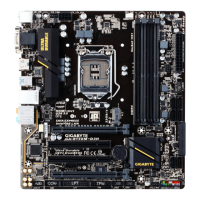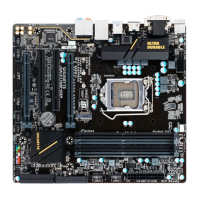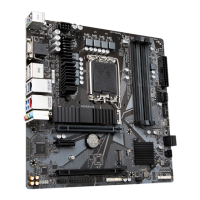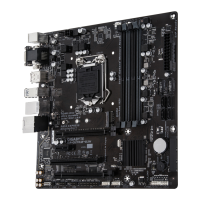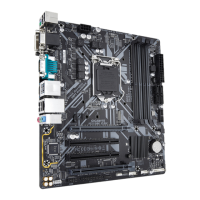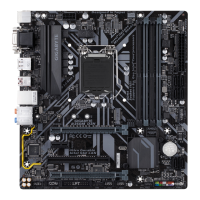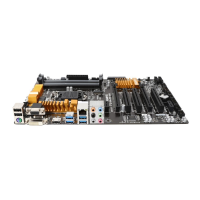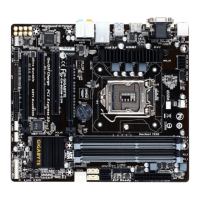Chapter 3 Appendix
Before you begin, please prepare the following items:
• At least two SATA hard drives or SSDs.
(Note1)
(To ensure optimal performance, it is recommended that you
usetwoharddriveswithidenticalmodelandcapacity).
(Note2)
• Windowssetupdisk.
• Motherboard driver disk.
• A USB thumb drive.
ConguringtheOnboardSATAController
A. Installing SATA hard drive(s) in your computer
Install the hard drives/SSDs in the Intel
®
Chipset controlled connectors on the motherboard. Then connect the
power connectors from your power supply to the hard drives.
B.ConguringSATAcontrollermodeinBIOSSetup
MakesuretoconguretheSATAcontrollermodecorrectlyinsystemBIOSSetup.
Steps:
1. GotoPeripherals\SATAAndRSTConguration,makesureSATAController(s)isenabled.TocreateRAID,
setSATAModeSelectiontoIntelRSTPremiumWithIntelOptaneSystemAcceleration.Then save the
settings and restart your computer.
2. TousetheEZRAIDfeature,followthestepsin"C-1."TocongureUEFIRAID,followthestepsin"C-2."To
enterthelegacyRAIDROM,referto"C-3"formoreinformation.Finally,savethesettingsandexitBIOSSetup.
The BIOS Setup menus described in this section may differ from the exact settings for your motherboard.
The actual BIOS Setup menu options you will see shall depend on the motherboard you have and
the BIOS version.
3-1 ConguringaRAIDSet
RAID Levels
(Note1) AnM.2PCIeSSDcannotbeusedtosetupaRAIDseteitherwithanM.2SATASSDoraSATAharddrive.
(Note2) Referto"1-7InternalConnectors,"fortheinstallationnoticesfortheM.2andSATAconnectors.
C-1. Using EZ RAID
GIGABYTEmotherboardsprovideyouwiththeEZRAIDfeature,allowingyoutoquicklycongureaRAID
arraywithsimpliedsteps.
Steps:
1. Afterrestartingthecomputer,entertheBIOSSetupandgotoPeripherals.Press<Enter>ontheEZRAID
item.SelectthetypeofharddrivesyouuseforRAIDintheTypetabandthenpress<Enter>.
2. GototheModetabtoselectaRAIDlevel.RAIDlevelssupportedincludeRAID0,RAID1,RAID10,
andRAID5(theselectionsavailabledependonthenumberoftheharddrivesbeinginstalled).Thenpress
<Enter> to move to the Create tab. Click Proceed to begin.
3. Aftercompleting,you'llbebroughtbacktotheIntel(R)RapidStorageTechnologyscreen.UnderRAIDVolumes
youcanseethenewRAIDvolume.Toseemoredetailedinformation,press<Enter>onthevolumetocheck
forinformationonRAIDlevel,stripeblocksize,arrayname,andarraycapacity,etc.
RAID 0 RAID 1 RAID 5 RAID 10
Minimum
NumberofHard
Drives
≥2 2 ≥3 4
Array Capacity
Numberofharddrives
*Sizeofthesmallest
drive
Sizeof the smallest
drive
(Numberofhard
drives-1)*Sizeof
the smallest drive
(Numberofhard
drives/2)*Sizeofthe
smallest drive
Fault Tolerance No Yes Yes Yes
- 36 -

